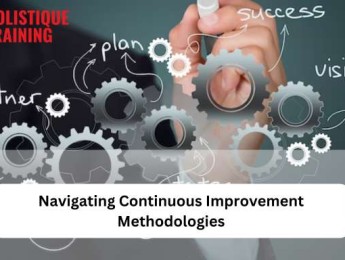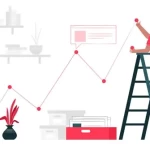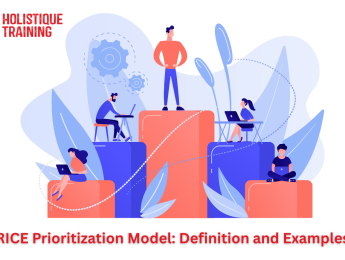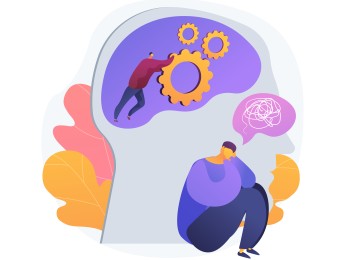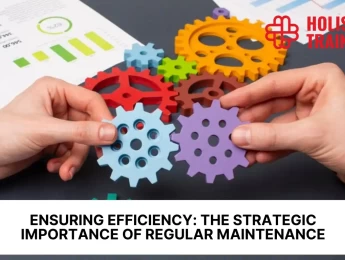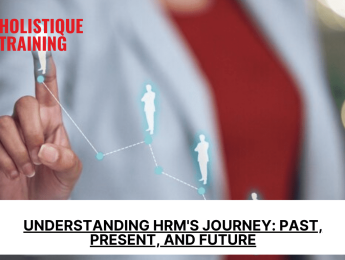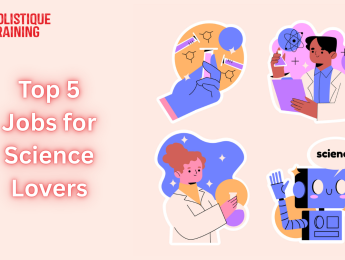- Table of Contents
- Introduction
- What Is a Continuous Improvement Process (CIP)?
- What Are the Most Popular Continuous Improvement Processes?
- 1. Six Sigma
- 2. Lean
- 3. Total Quality Management (TQM)
- 4. Kaizen
- 5. Agile
- The History & Evolution of Continuous Improvement Methods
- 1950s-1970s: The Emergence of Total Quality Management (TQM)
- 1980s-1990s: Six Sigma and Lean Manufacturing
- Late 20th Century: Integration of Quality Philosophies
- 21st Century: Adaptation and Technological Integration
- Present and Future: Holistic Organisational Transformation
- Tools That Can Be Used to Help With CIP
- 1. Statistical Process Control (SPC)
- 2. Value Stream Mapping (VSM)
- 3. The 5 Whys
- 4. Fishbone Diagram (Ishikawa)
- 5. Kanban Boards
- 6. Root Cause Analysis (RCA)
- 7. Poka-Yoke
- Why Is Having a Continuous Improvement Methodology Important?
- Enhanced Efficiency and Productivity
- Improved Quality and Consistency
- Cost Reduction
- Increased Employee Engagement
- Customer Satisfaction
- Adaptability to Market Changes
- Long-Term Sustainability
- Which Continuous Improvement Method Will Work Best for Your Organisation?
- 1. Six Sigma
- 2. Lean
- 3. Total Quality Management (TQM)
- 4. Agile
- Integration of Methodologies
- Consider Your Organisational Culture
- Experimentation and Iteration
- The Future of Continuous Improvement Methodologies
- Data-Driven Decision Making
- Integration of Industry 4.0 Technologies
- Focus on Sustainability
- Augmented Reality (AR) and Virtual Reality (VR) in Training and Problem-Solving
- Collaborative and Inclusive Improvement
- Cultural Embrace of Continuous Improvement
- Conclusion
Introduction
Picture a scenario where a company constantly evolves, enhancing its processes, increasing efficiency, and always striving for perfection. This isn't a utopian dream but a tangible reality achieved through Continuous Improvement Processes (CIP). CIP isn't just a set of practices; it's a culture that fosters ongoing enhancement in every aspect of an organisation. In this exploration of Continuous Improvement Methodologies, we will delve into the core concepts, the historical evolution, popular techniques, essential tools, and the future landscape of CIM.
What Is a Continuous Improvement Process (CIP)?
At its essence, Continuous Improvement Process (CIP) is a systematic and ongoing effort to enhance products, services, or processes. It’s not a one-time fix but a philosophy deeply embedded within an organisation's culture. CIP encourages employees at all levels to constantly seek ways to improve their work, thereby increasing efficiency and effectiveness.
What Are the Most Popular Continuous Improvement Processes?
Continuous Improvement Processes (CIP) come in various flavours, each designed to cater to specific organisational needs and challenges. Understanding the nuances of these methodologies is essential for organisations aiming to embrace a culture of continual enhancement. Let’s take a closer look at some of the most popular Continuous Improvement Processes:
1. Six Sigma
Six Sigma, a methodology developed by Motorola in the 1980s, is rooted in statistical analysis and data-driven decision-making. It aims to reduce defects and improve quality by meticulously measuring processes and identifying variations. The term ‘Six Sigma’ refers to the statistical concept where a process is so precise that it operates with only 3.4 defects per million opportunities. By employing tools like DMAIC (Define, Measure, Analyse, Improve, Control), Six Sigma ensures organisations operate at optimal efficiency, delivering products or services with exceptional quality. To top all of that, according to Villanova University, businesses applying the Six Sigma methodology have experienced waste reduction, profit increment, and heightened shareholder value.
2. Lean
Lean, often associated with manufacturing, focuses on eliminating waste in processes. Originating from the Toyota Production System, Lean principles aim to create value for customers while minimising resources, time, and energy. It identifies and removes activities that don’t add value to the end product or service. Through techniques like Value Stream Mapping and Kaizen events (short, focused bursts of improvement activity), Lean methodologies streamline operations, enhance productivity, and create a more efficient workflow.
3. Total Quality Management (TQM)
Total Quality Management is a holistic approach that involves everyone in an organisation working together to improve processes, products, services, and culture. TQM emphasises a customer-focused mindset, employee involvement, and continuous feedback loops. It fosters a sense of responsibility and accountability among all employees, promoting a culture where quality is not just a goal but a way of doing business. TQM principles include customer focus, continuous improvement, process orientation, and fact-based decision making.
4. Kaizen
Kaizen, a Japanese term meaning “change for better,” centres on the concept of continuous, small improvements. Unlike drastic changes that might disrupt operations, Kaizen advocates for gradual, incremental enhancements in processes, products, or services. It involves employees at all levels, encouraging them to suggest and implement small, practical improvements regularly. This approach cultivates a sense of ownership, leading to a continuous cycle of improvement and innovation within the organisation.
5. Agile
Originally developed for software development, Agile methodologies have transcended the tech world and found applications in various industries. Agile is characterised by iterative development, where projects are divided into small increments with minimal planning and changes can be made as the project progresses. Agile promotes collaboration, adaptability, and customer feedback, ensuring that the end product aligns perfectly with customer needs and market demands. Also, statistics have shown that following the adoption of Agile practices, companies have seen a remarkable average growth of 60% in both revenue and profit margins.
Each of these processes has its unique strengths, making it suitable for specific contexts. The choice between these methodologies depends on the organisation’s goals, industry, and the nature of the challenges faced. Some organisations even choose to blend elements from different methodologies to create a customised approach tailored to their specific needs. Regardless of the chosen method, the underlying principle remains the same: a commitment to continuous enhancement, ensuring that organisations not only survive but thrive in an ever-changing business landscape.
The History & Evolution of Continuous Improvement Methods
The roots of Continuous Improvement Methods (CIM) can be traced back to the early 20th century, but it was in post-World War II Japan that these methodologies truly took shape and gained global attention. The country was in ruins, and there was a pressing need for economic recovery and stability. During this time, luminaries like W. Edwards Deming and Joseph Juran were invited to Japan to assist in rebuilding their industries. These pioneers introduced concepts like statistical quality control and the importance of quality management, laying the foundation for what would become Continuous Improvement.
1950s-1970s: The Emergence of Total Quality Management (TQM)
In the 1950s, quality control methodologies were further refined, leading to the development of Total Quality Management (TQM). TQM emphasised a comprehensive approach to quality improvement, involving all employees and departments in the pursuit of excellence. This era also saw the introduction of quality awards and certifications, encouraging organisations to adopt standardised quality practices.
1980s-1990s: Six Sigma and Lean Manufacturing
The 1980s marked a significant shift with the development of Six Sigma, a methodology that focused on reducing defects and variations in processes. Motorola, under the leadership of Robert Galvin, played a pivotal role in popularising Six Sigma. Concurrently, Lean Manufacturing, inspired by the Toyota Production System, gained prominence. Lean principles aimed at eliminating waste and optimising production processes, emphasising efficiency and value creation.
Late 20th Century: Integration of Quality Philosophies
As the 20th century progressed, organisations recognised the value of integrating various quality philosophies. Businesses started combining Six Sigma’s precision with Lean’s efficiency, creating a hybrid approach known as Lean Six Sigma. This integration proved especially effective, addressing both process variability and waste reduction, leading to enhanced productivity and quality outcomes.
21st Century: Adaptation and Technological Integration
In the 21st century, Continuous Improvement Methods continued to evolve in response to the digital revolution. The advent of advanced analytics, big data, and artificial intelligence transformed how organisations analyse and interpret data. This evolution enabled a shift from reactive problem-solving to predictive analytics, allowing businesses to anticipate issues before they occur, a significant leap in the realm of Continuous Improvement.
Moreover, Continuous Improvement Methods expanded beyond manufacturing and entered sectors such as healthcare, education, and service industries. Healthcare organisations embraced these methodologies to enhance patient care and safety, while educational institutions used them to optimise administrative processes and improve learning outcomes. Service industries, traditionally considered intangible, found innovative ways to measure and improve service quality, leading to higher customer satisfaction rates.
Present and Future: Holistic Organisational Transformation
In the present day, Continuous Improvement Methods have become integral to organisational culture. They are not viewed merely as strategies but as fundamental philosophies shaping how businesses operate. The future of Continuous Improvement lies in holistic organisational transformation. It's not just about refining processes; it's about fostering a culture where innovation, adaptability, and continuous learning are at the core.
Additionally, the integration of CIM with sustainability practices is becoming more prevalent. Organisations are focusing not only on enhancing efficiency and quality but also on minimising environmental impact and ensuring social responsibility. This holistic approach aligns businesses with broader global goals, making them socially conscious entities.
In this ongoing journey, Continuous Improvement Methods will continue to evolve, incorporating new technologies, methodologies, and ideologies. As businesses face unprecedented challenges and opportunities, the ability to adapt, innovate, and continually improve will remain the key to not only surviving but thriving in the dynamic landscapes of the 21st century and beyond.
Tools That Can Be Used to Help With CIP
Continuous Improvement Processes (CIP) rely on a plethora of tools and techniques that empower organisations to identify bottlenecks, analyse data, and make informed decisions. These tools serve as guiding stars, illuminating the path toward enhanced efficiency, quality, and customer satisfaction. Here’s a closer look at some essential tools that play pivotal roles in the realm of CIP:
1. Statistical Process Control (SPC)
SPC is a statistical method that monitors and controls processes to ensure they operate efficiently, producing high-quality output. By collecting and analysing data in real-time, SPC provides insights into the process performance, helping organisations identify variations and take corrective actions. Control charts, histograms, and scatter diagrams are common SPC tools, allowing businesses to maintain consistency and predictability in their processes.
2. Value Stream Mapping (VSM)
VSM is a graphical representation of a process that helps organisations understand, analyse, and optimise the flow of materials and information. By mapping the entire process visually, from start to finish, VSM highlights inefficiencies and areas of improvement. This tool enables teams to identify non-value-added activities, reduce lead times, and enhance overall process flow, ultimately leading to reduced waste and increased productivity.
3. The 5 Whys
The 5 Whys technique is a simple yet powerful tool used for root cause analysis. It involves asking “why” repeatedly (typically five times) until the root cause of a problem is identified. By drilling down to the fundamental cause of an issue, organisations can implement targeted solutions, preventing recurrence. The 5 Whys tool encourages a deeper understanding of problems, facilitating more effective and long-lasting solutions.
4. Fishbone Diagram (Ishikawa)
The Fishbone Diagram, also known as the Ishikawa or Cause-and-Effect diagram, is a visual representation used to explore the potential causes of a specific problem. It categorises causes into various branches, such as people, processes, equipment, environment, and materials. By identifying and analysing these factors, organisations gain a comprehensive understanding of the root causes of issues, enabling them to devise strategies for improvement.
5. Kanban Boards
Kanban boards are visual task management tools used to optimise workflow efficiency. Tasks or work items are represented as cards on a board, categorised into columns representing different stages of the process. As tasks progress, they move across the columns, providing a clear visual representation of the workflow. Kanban promotes transparency, allowing teams to identify bottlenecks, balance workloads, and improve overall process efficiency. In fact, in The State of Kanban Report 2022, as cited by Business Map, almost 90% of participants stated that employing Kanban proved superior to alternative methods of work management.
6. Root Cause Analysis (RCA)
Root Cause Analysis is a systematic process for identifying the underlying causes of problems. It involves a detailed investigation into the factors contributing to an issue, considering both immediate and underlying causes. RCA methods include techniques like brainstorming, cause-and-effect analysis, and data collection. By addressing the root causes, organisations can prevent recurring problems, fostering a more stable and reliable operational environment.
7. Poka-Yoke
Poka-Yoke, a Japanese term meaning “mistake-proofing” or “error-proofing,” involves designing processes in a way that prevents mistakes from occurring. This can be achieved through the use of specific mechanisms, such as fixtures, sensors, or warning systems, that detect and prevent errors before they escalate. By incorporating Poka-Yoke techniques, organisations minimise defects, enhance quality, and reduce the need for rework, leading to significant time and cost savings.
These tools are not just instruments; they are catalysts for change and continuous improvement. When wielded effectively, they empower organisations to dissect complexities, illuminate inefficiencies, and pave the way for a future characterised by streamlined processes, higher quality outputs, and ultimately, delighted customers. As organisations continue to embrace Continuous Improvement, these tools will remain invaluable assets, guiding them toward excellence and sustainable growth.
Why Is Having a Continuous Improvement Methodology Important?
Continuous Improvement Methodologies (CIM) are not merely business strategies; they are foundational principles that breathe life into an organisation. In the dynamic landscape of modern business, where change is the only constant, having a robust Continuous Improvement Methodology is indispensable. Here’s why embracing this approach is vital for any organisation aiming for sustained success:
Enhanced Efficiency and Productivity
CIM enables organisations to streamline their processes, identify bottlenecks, and eliminate inefficiencies. By continually optimising workflows, tasks are completed more swiftly, resources are utilised more effectively, and productivity soars. Efficiency becomes ingrained in the organisation’s culture, ensuring that time and resources are utilised to their fullest potential.
Improved Quality and Consistency
Continuous Improvement is synonymous with a relentless pursuit of quality. By consistently evaluating and refining processes, organisations can identify areas where quality can be enhanced. Through methodologies like Six Sigma and Lean, defects are reduced, and consistency in product or service quality is achieved. This commitment to quality not only satisfies existing customers but also attracts new ones, enhancing the organisation’s reputation in the market.
Cost Reduction
Identifying and eliminating waste is a fundamental aspect of many Continuous Improvement Methodologies. By reducing unnecessary steps, optimising resource allocation, and minimising errors, organisations can significantly cut operational costs. Cost savings translate into increased profitability and resources that can be reinvested in further improvements or innovation initiatives.
Increased Employee Engagement
Implementing Continuous Improvement fosters a culture of innovation and problem-solving. Employees are encouraged to participate in the improvement process, share their ideas, and take ownership of their work. This involvement leads to higher job satisfaction, increased morale, and a sense of pride in contributing to the organisation’s success. Engaged employees are more productive, creative, and committed, resulting in a positive work environment.
Customer Satisfaction
Satisfied customers are the lifeblood of any business. CIM ensures that the products or services delivered consistently meet or exceed customer expectations. By actively seeking customer feedback and incorporating it into the improvement process, organisations can align their offerings with customer needs. This customer-centric approach not only retains existing clients but also generates positive word-of-mouth, attracting new customers and fostering brand loyalty.
Adaptability to Market Changes
In today’s rapidly changing market, organisations must be agile and adaptable. Continuous Improvement instils a culture of learning and responsiveness. By analysing market trends, customer preferences, and industry innovations, organisations can proactively adjust their strategies and offerings. This adaptability ensures that the organisation remains relevant and competitive, even in the face of unpredictable market shifts.
Long-Term Sustainability
Organisations that embrace Continuous Improvement are better positioned for long-term sustainability. The ability to adapt, innovate, and optimise operations ensures resilience against economic downturns and market challenges. A culture of continuous learning and improvement equips the organisation with the tools needed to navigate uncertainties, making it well-prepared for the future.
In essence, Continuous Improvement Methodologies are the cornerstone of organisational excellence. They foster a culture of innovation, efficiency, and customer-centricity. Embracing these methodologies is not just a strategic choice; it’s a commitment to a journey of perpetual growth and evolution. In a world where standing still means falling behind, organisations that prioritise Continuous Improvement are not only thriving today but also shaping a successful and sustainable tomorrow.
Which Continuous Improvement Method Will Work Best for Your Organisation?
Selecting the most suitable Continuous Improvement Methodology for your organisation is akin to choosing the right tool for a specific task. Each methodology has its unique strengths, and the choice largely depends on your organisation’s nature, challenges, and objectives. Here’s what you should consider to help you make an informed decision:
1. Six Sigma
Six Sigma is ideal for organisations where precision and statistical analysis are crucial. It is particularly effective in manufacturing settings, where even minor defects can have significant consequences. However, Six Sigma is not limited to manufacturing; it has found applications in various service industries as well. If your organisation prioritises data-driven decision-making and reducing defects to a minimum, Six Sigma might be the right choice.
2. Lean
Lean methodology is excellent for organisations seeking to optimise their processes by eliminating waste and maximising value. If your company faces challenges related to excess inventory, overproduction, waiting times, or inefficient transportation, Lean offers practical tools like Value Stream Mapping and Kaizen events to address these issues. It’s especially valuable in industries like manufacturing, where efficient use of resources is paramount.
3. Total Quality Management (TQM)
TQM is suitable for companies aiming to create a culture of quality and continuous improvement. It is particularly beneficial when your organisation needs an approach that emphasises customer satisfaction, employee involvement, and process improvement. TQM is highly adaptable and can be applied in various sectors, from manufacturing to healthcare and services.
4. Agile
Agile is perfect for organisations dealing with rapidly changing requirements and uncertainties. It promotes collaboration, adaptability, and customer feedback, making it an excellent choice for software development, marketing campaigns, or any project where continuous iterations and client feedback are vital.
Integration of Methodologies
In many cases, the best approach is not a rigid adherence to one methodology but a tailored integration of multiple methods. For instance, combining Six Sigma’s precision with Lean’s waste elimination techniques results in Lean Six Sigma, a powerful tool for improving both quality and efficiency. Similarly, integrating Agile principles with Lean concepts can yield an approach that balances adaptability and resource optimisation, perfect for many modern organisations.
Consider Your Organisational Culture
Apart from the nature of your industry and challenges, consider your organisational culture. Some methodologies, like Kaizen, emphasise bottom-up, continuous, and incremental improvements. If your organisation values employee participation and empowerment, Kaizen might be a natural fit. Understanding your organisation’s ethos and values is crucial in choosing a methodology that aligns seamlessly with your culture.
Experimentation and Iteration
Lastly, don’t hesitate to experiment. Continuous Improvement is, at its core, about learning from experience. Start with a methodology that seems promising, implement it in a specific department or project, and assess the results. Be open to iteration and adaptation. Continuous Improvement itself can be applied to the process of choosing the right methodology, ensuring that your organisation evolves and finds the best fit over time.
In short, the choice of a Continuous Improvement Methodology is a strategic decision that demands careful consideration of your organisation’s unique needs and aspirations. By selecting the right methodology, or a combination thereof, your organisation can embark on a transformative journey, fostering a culture of innovation, efficiency, and excellence that propels it toward sustained success and growth.
The Future of Continuous Improvement Methodologies
As we step into an era defined by technological advancements, rapid globalisation, and environmental consciousness, the landscape of Continuous Improvement Methodologies (CIM) is undergoing transformative shifts. The future of CIM promises innovative approaches and sustainability integration, ensuring that organisations not only adapt to change but also proactively shape their future. Here’s a glimpse into what lies ahead for Continuous Improvement:
Data-Driven Decision Making
The future of Continuous Improvement is deeply intertwined with data analytics. Advanced technologies like Artificial Intelligence (AI) and Machine Learning (ML) are enabling organisations to gather, process, and interpret vast amounts of data in real-time. Predictive analytics will become a cornerstone, allowing businesses to anticipate issues before they occur. Data-driven decision-making will not only enhance efficiency and quality but also empower organisations to forecast trends and customer preferences, making their strategies more targeted and effective.
Integration of Industry 4.0 Technologies
The Fourth Industrial Revolution, often referred to as Industry 4.0, is marked by the integration of smart technologies such as the Internet of Things (IoT), robotics, and automation. In the realm of Continuous Improvement, these technologies facilitate autonomous monitoring and adjustment of processes. IoT devices provide real-time data, enabling organisations to monitor equipment performance, anticipate maintenance needs, and optimise resource usage. Automation and robotics, combined with AI, enhance precision, speed, and efficiency in manufacturing and service processes, reducing errors and operational costs.
Focus on Sustainability
Sustainability is no longer a choice but a necessity. CIM in the future will be deeply committed to sustainable practices. Organisations will integrate Continuous Improvement with environmentally conscious strategies, reducing waste, conserving resources, and adopting eco-friendly production methods. Lean methodologies will extend beyond waste elimination to focus on sustainable sourcing, green energy usage, and reduced carbon footprint. Sustainable practices will not only align businesses with global environmental goals but also resonate strongly with eco-conscious consumers, enhancing brand reputation and customer loyalty.
Table 2: Critical skills for the future of CIM
Skills | Importance in CIM’s Future | Impact on Organisational Success |
Data Analysis | Advanced Data Interpretation and Prediction | Informed Decision-Making and Proactive Solutions |
Creativity and Innovation | Creative Problem-Solving and Idea Generation | Drives Product and Process Innovation |
Digital Literacy | Proficiency in Digital Tools and Platforms | Efficient Implementation of Technological Solutions |
Cross-Disciplinary Skills | Collaboration Across Various Disciplines | Diverse Perspectives and Holistic Problem-Solving |
Adaptability | Rapid Learning and Flexibility | Agility in Adapting to Changing Business Dynamics |
Augmented Reality (AR) and Virtual Reality (VR) in Training and Problem-Solving
AR and VR technologies are revolutionising training and problem-solving processes. In the future, organisations will utilise these immersive technologies to provide realistic training experiences, simulate complex scenarios, and facilitate interactive problem-solving sessions. For Continuous Improvement teams, this means enhanced collaboration, faster root cause analysis, and innovative solutions. Remote experts can guide on-site teams through AR interfaces, accelerating troubleshooting and reducing downtime. This integration of AR and VR will significantly enhance the efficiency of Continuous Improvement initiatives.
Collaborative and Inclusive Improvement
Continuous Improvement in the future will be increasingly collaborative and inclusive. Organisations will engage not only employees but also customers, suppliers, and even competitors in the improvement process. Crowdsourcing ideas, open innovation initiatives, and collaborative problem-solving platforms will become prevalent. Engaging a diverse range of perspectives will fuel innovation, leading to creative solutions and out-of-the-box thinking. Inclusive improvement practices will foster a sense of community and shared purpose, driving organisations toward common goals.
Cultural Embrace of Continuous Improvement
In the future, Continuous Improvement will not be just a methodology; it will be a cultural norm. Organisations will instil a mindset of continuous learning, innovation, and adaptation from top leadership to frontline employees. This cultural embrace of Continuous Improvement will be the bedrock of organisational resilience. Employees will be encouraged to experiment, learn from failures, and adapt quickly, creating an environment where change is not feared but embraced as an opportunity for growth.
In summary, the future of Continuous Improvement Methodologies is dynamic, innovative, and sustainable. By harnessing the power of data, embracing cutting-edge technologies, focusing on sustainability, and fostering collaborative and inclusive cultures, organisations will not only navigate the challenges of the future but also thrive in an ever-changing global landscape. Continuous Improvement will not just be a strategy; it will be the lifeblood that propels organisations toward excellence, ensuring they remain agile, innovative, and sustainable in the years to come.
Conclusion
In conclusion, Continuous Improvement Methodologies are not just strategies; they are the lifeblood of progressive organisations. Embracing CIP isn’t a choice; it's a strategic imperative. As we move into an era driven by innovation and efficiency, organisations that invest in and nurture a culture of Continuous Improvement will undoubtedly emerge as leaders. By understanding the core principles, historical context, tools, and future trends of Continuous Improvement, organisations can embark on a transformative journey, ensuring sustained growth and excellence. Remember, it’s not about reaching perfection, but the pursuit of it through continuous, incremental improvements that define a truly successful organisation.
As you navigate this transformative journey, consider enhancing your expertise with our course, ‘Planning for Continuous Process Improvement.’ This immersive experience will empower you with practical strategies, industry insights, and hands-on skills, ensuring you lead your organisation toward a future of sustainable success and innovation. Join us and embark on the path to mastering CIM, where your expertise meets limitless possibilities. Enrol now or contact us for more information.


